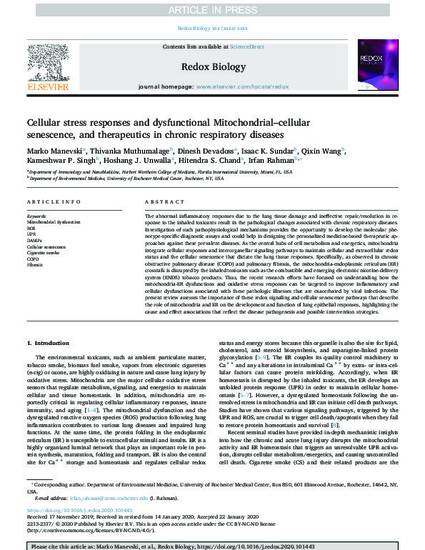
The abnormal inflammatory responses due to the lung tissue damage and ineffective repair/resolution in response to the inhaled toxicants result in the pathological changes associated with chronic respiratory diseases. Investigation of such pathophysiological mechanisms provides the opportunity to develop the molecular phenotype-specific diagnostic assays and could help in designing the personalized medicine-based therapeutic approaches against these prevalent diseases. As the central hubs of cell metabolism and energetics, mitochondria integrate cellular responses and interorganellar signaling pathways to maintain cellular and extracellular redox status and the cellular senescence that dictate the lung tissue responses. Specifically, as observed in chronic obstructive pulmonary disease (COPD) and pulmonary fibrosis, the mitochondria-endoplasmic reticulum (ER) crosstalk is disrupted by the inhaled toxicants such as the combustible and emerging electronic nicotine-delivery system (ENDS) tobacco products. Thus, the recent research efforts have focused on understanding how the mitochondria-ER dysfunctions and oxidative stress responses can be targeted to improve inflammatory and cellular dysfunctions associated with these pathologic illnesses that are exacerbated by viral infections. The present review assesses the importance of these redox signaling and cellular senescence pathways that describe the role of mitochondria and ER on the development and function of lung epithelial responses, highlighting the cause and effect associations that reflect the disease pathogenesis and possible intervention strategies.
Available at: http://works.bepress.com/hitendra-chand/2/

Originally published in Redox Biology.